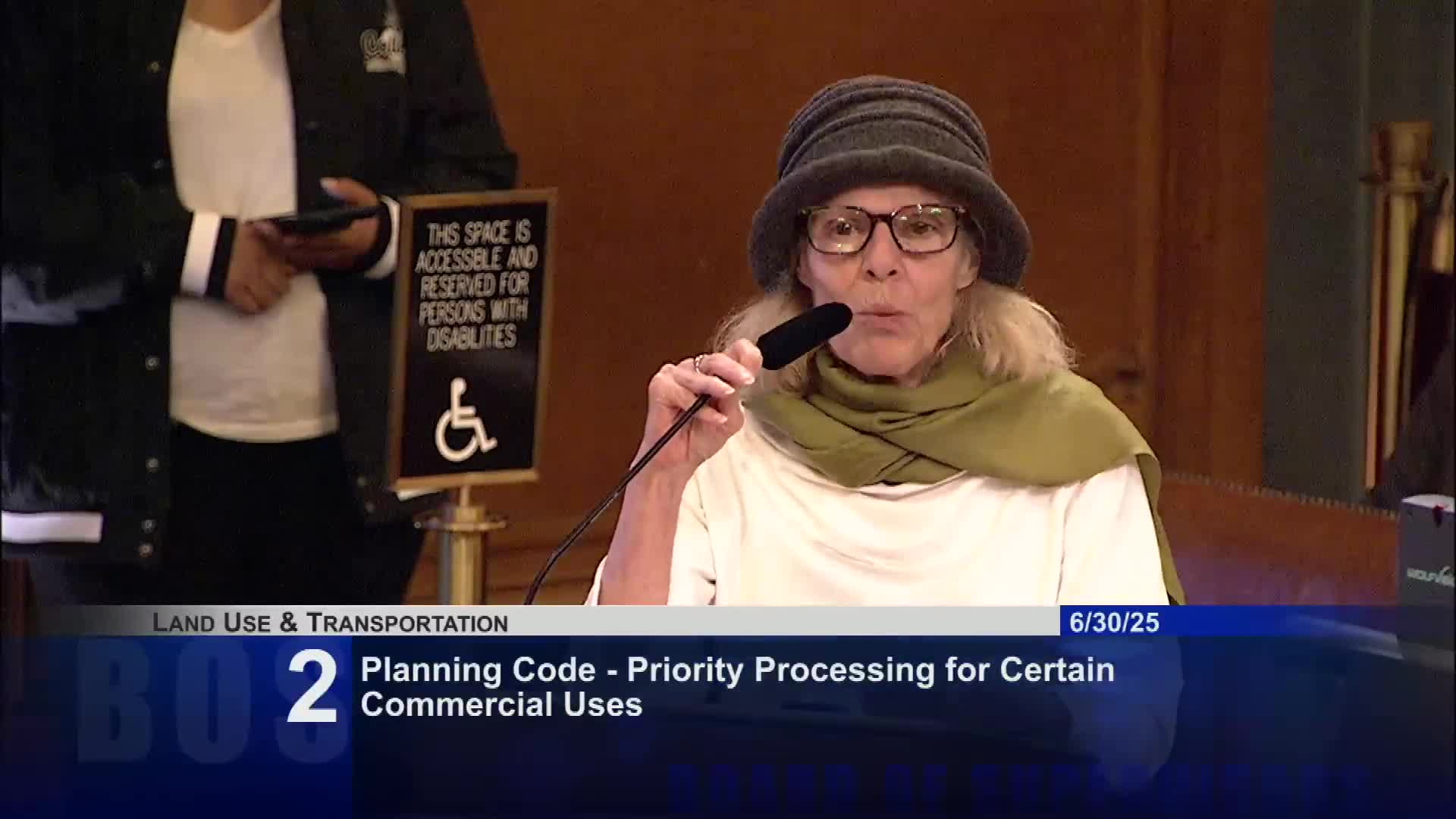Calle Eventico leaders advocate for exemption from new business legislation in San Francisco
June 30, 2025 | San Francisco County, California
This article was created by AI summarizing key points discussed. AI makes mistakes, so for full details and context, please refer to the video of the full meeting. Please report any errors so we can fix them. Report an error »

The San Francisco County government meeting held on June 30, 2025, focused on critical discussions regarding local business regulations and community support initiatives. The meeting began with public comments emphasizing the importance of preserving cultural districts, particularly Calle Eventico, which has been significantly impacted by gentrification. Susana Rojas, the executive director of Calle Eventico Latino Cultural District, highlighted the district's low vacancy rates and its resilience compared to other neighborhoods, urging the board to exempt Calle Eventico and North Beach from proposed legislative changes that could threaten their unique character.
The discussion transitioned to the proposed legislation aimed at simplifying the business permit process, which has been described as confusing, particularly for non-English speaking entrepreneurs. Some supervisors expressed concerns that the proposed changes might not adequately support new businesses, especially those owned by immigrants. Despite these concerns, a consensus emerged among supervisors representing the affected districts to support the amendments, which would exempt the two neighborhoods from the new regulations.
Vice Chair Chen emphasized the need for a balance between streamlining the permit process and protecting the unique cultural identities of neighborhoods. The board ultimately voted in favor of the amendments, signaling a commitment to support local businesses while acknowledging the historical challenges faced by cultural districts.
The meeting also addressed the extension of the awning amnesty program, which aims to allow existing unpermitted signs and gates to comply with updated planning codes. This initiative is part of broader efforts to enhance the commercial landscape in various districts while ensuring public safety and aesthetic standards.
In conclusion, the meeting underscored the importance of community input in legislative processes and the ongoing efforts to support local businesses in San Francisco County. The board's decisions reflect a commitment to fostering a thriving and culturally rich environment, while also navigating the complexities of urban development and community preservation.
The discussion transitioned to the proposed legislation aimed at simplifying the business permit process, which has been described as confusing, particularly for non-English speaking entrepreneurs. Some supervisors expressed concerns that the proposed changes might not adequately support new businesses, especially those owned by immigrants. Despite these concerns, a consensus emerged among supervisors representing the affected districts to support the amendments, which would exempt the two neighborhoods from the new regulations.
Vice Chair Chen emphasized the need for a balance between streamlining the permit process and protecting the unique cultural identities of neighborhoods. The board ultimately voted in favor of the amendments, signaling a commitment to support local businesses while acknowledging the historical challenges faced by cultural districts.
The meeting also addressed the extension of the awning amnesty program, which aims to allow existing unpermitted signs and gates to comply with updated planning codes. This initiative is part of broader efforts to enhance the commercial landscape in various districts while ensuring public safety and aesthetic standards.
In conclusion, the meeting underscored the importance of community input in legislative processes and the ongoing efforts to support local businesses in San Francisco County. The board's decisions reflect a commitment to fostering a thriving and culturally rich environment, while also navigating the complexities of urban development and community preservation.
View full meeting
This article is based on a recent meeting—watch the full video and explore the complete transcript for deeper insights into the discussion.
View full meeting
